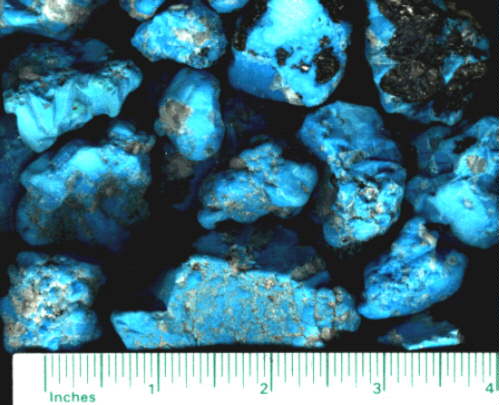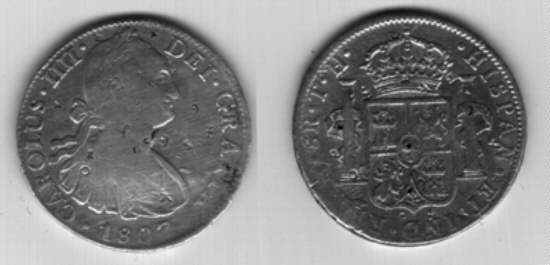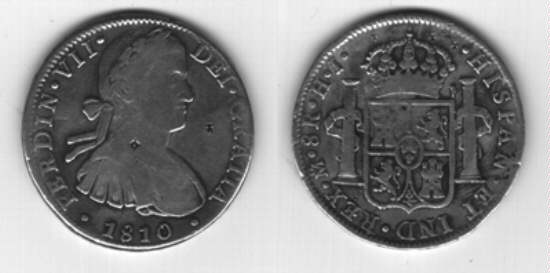Download ebook of Buried Treasure and Lost Gold Mines |
Treasure Stories |
| HOME |
| Florida's Pirate |
| Finding Treasure |
| Lost Dutchman |
| USS Enterprise |
| Pirate Flags |
| Author |
Ships & Coins |
| Treasure Coins |
| Sailing Ships |
Pieces of Eight
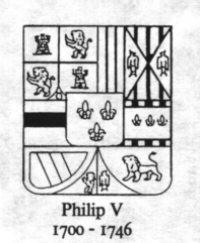 The first coinage of the New World and what comes to mind when we think of Pirate Treasure are pieces of eight.
These first coins, often called cob coins, were made from roughly cut planchets (blanks) by striking them with hand dies.
The word Cobb comes from a simplification of the Spanish phrase, Cabo de Barra, which translates as, from a bar.
After the coins are struck, they are weighed by an assayer who cuts off any excess Silver which is why most coins
have some of the impression cut away. Due to this method of manufacturer no two coins are alike and many are collected
for their unique shapes alone. The Cobb coin, like anything that is no longer available is becoming very scarce and hence
more valuable. The few remaining Coins are the last vintage of the glory days of pirates and Treasure hunting and are fast
disappearing into private hands.
The first coinage of the New World and what comes to mind when we think of Pirate Treasure are pieces of eight.
These first coins, often called cob coins, were made from roughly cut planchets (blanks) by striking them with hand dies.
The word Cobb comes from a simplification of the Spanish phrase, Cabo de Barra, which translates as, from a bar.
After the coins are struck, they are weighed by an assayer who cuts off any excess Silver which is why most coins
have some of the impression cut away. Due to this method of manufacturer no two coins are alike and many are collected
for their unique shapes alone. The Cobb coin, like anything that is no longer available is becoming very scarce and hence
more valuable. The few remaining Coins are the last vintage of the glory days of pirates and Treasure hunting and are fast
disappearing into private hands.
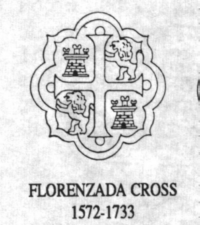 The most well known Treasure cobb-coins are those that came from the 1715 fleet that sank off the Coast Florida in that year.
They can be identified by the shield of King Philip V shown to the left and the Florenzada cross, shown to the right,
that was only used on Mexican coins. The 1715 coins, which I have a few, are being sold by some for more than a thousand dollars
and can be seen on Mel Fisher's website in that amount.
The most well known Treasure cobb-coins are those that came from the 1715 fleet that sank off the Coast Florida in that year.
They can be identified by the shield of King Philip V shown to the left and the Florenzada cross, shown to the right,
that was only used on Mexican coins. The 1715 coins, which I have a few, are being sold by some for more than a thousand dollars
and can be seen on Mel Fisher's website in that amount.
Photographs of Cob Coins from the 1715 Spanish Fleet
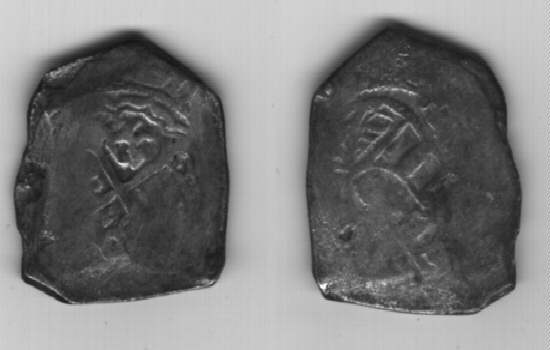
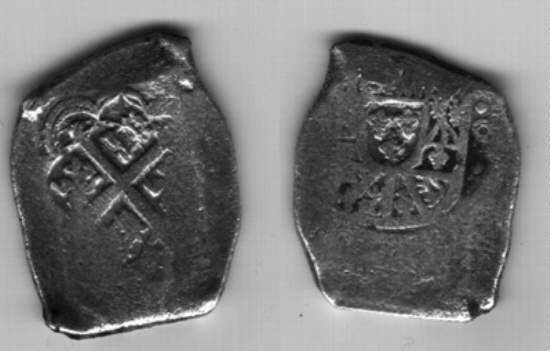
Click on image
to expand view
click back-button to return
Pillar Dollar and Bust Dollar
The crude Hand-struck process was replaced in 1732 with the screw press method. The screw press was a technological jump which produced coins of consistent quality and eliminated the irregular stamp pattern inherent to the hand-held dies. This new process produced near-perfect coins of the Pillar Dollar design and later the Bust Dollar of the late 1700's. These later coins were in common use in the United States at the time, and also in world commerce and although they are not as unique as cobb-coins, they still represent coins from the heyday of piracy. They had the reigning Spanish Monarch's image on the obverse side and the pillars of Hercules wrapped in ribbons on the reverse. This design is believed to be the origin of our dollar sign symbol.
The Spanish bust Dollar was the currency of the world and because of this it became a target for counterfeiters; therefore, a practice arose where the money houses would authenticate coins by placing their symbols called a Chop-Mark on the coin. This practice continues today where on many of our paper money is a printed Chop-Mark.
Coins with these chop marks have become unique to collectors, with the chop marks themselves dictating the value of the coin.
The Coins that I show are from the treasure collection passed down to me. These coins are one-of-a-kind and anyone who is interested in obtaining one should send a message in the comments of our guest book to see if any are available.
Turquoise is the most beautiful of all our semi precious stones and it has a place in contemporary jewelry as well as deep religious significance. The best and the most sought-after turquoise in the United States have come from Kingmen Arizona where for years jewelers have paid premiums to have this sky blue turquoise for their jewelry.
The bountiful supply that seemed to be endless for years has come to an end. Almost all the turquoise produced today is stabilized. This is a process where the mineral is soaked in plastic to hold it together and obviously the turquoise is a much inferior quality. The rough turquoise is no longer a thing of beauty but looks instead like a plastic gob.
Turquoise has always been identified with our Southwest and comes to mind when we think about western treasure sites. When I was travelling there in the 1960's I was able to purchase a few pounds of natural Kingmen rough turquoise. This beautiful turquoise is valuable as specimen pieces of natural turquoise rough. Less than 1 percent of the turquoise mined today comes close to its quality but it is now gone and there will be no more.
